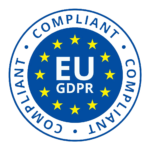In clinical research, inspections are not a matter of if, they are a matter of when. Regulatory authorities such as the EMA and the FDA can request access to your study systems at any point. If your processes are not prepared, the result can be costly delays, compliance issues, or even the rejection of trial data.
The good news is that with the right tools and approach, being inspection-ready does not have to be stressful. At Xolomon, we design our eCRD, CTMS and ePRO platforms to help sponsors, CROs and sites stay compliant every day, not just when an audit is scheduled.
What does “inspection-ready” mean?
Being inspection-ready means that all your trial systems and processes are:
- Up to date with the latest protocols and amendments
- Fully traceable, with clear audit trails of who did what, when, and why
- Consistent across all sites and stakeholders
- Secure, ensuring patient privacy and data integrity
It’s about building readiness into your daily workflows, so that if regulators knock on your door tomorrow, you are already prepared.
Common pitfalls in inspections
Many research teams fall into the same traps:
- Missing or outdated documents
- Inconsistent data entry across sites
- Lack of visibility over protocol deviations
- Incomplete audit logs
- Manual processes that slow down responses
These issues often arise when trial operations are spread across multiple tools, or still depend on paper or spreadsheets
How digital platforms help
Modern platforms like Xolomon’s eCRD and CTMS simplify compliance by embedding regulatory requirements into daily practice:
1. Automated audit trails
Every action is logged automatically, date, time, user and change, making it easy to show regulators exactly how data was handled.
2. Centralised document management
Instead of chasing files across emails and folders, all versions live in one secure system, with access rights controlled by role.
3. Real-time monitoring
Dashboards and alerts highlight deviations, missing data, or overdue tasks before they become findings in an inspection.
4. Role-based access
Investigators, monitors and sponsors each see only what they need, reducing errors and protecting sensitive patient information.
5. Seamless updates
When a protocol changes, updates can be rolled out across all forms and workflows instantly, keeping every site aligned.
Building a culture of readiness
Technology alone is not enough. Teams should:
- Train staff regularly on regulatory expectations
- Align SOPs with digital workflows
- Perform internal “mock audits” to test systems
With the right combination of processes and tools, inspections become routine checkpoints instead of stressful events.
Xolomon: making research accessible
Regulatory inspections will always be part of clinical research. But with a modern system like Xolomon’s eCRD, CTMS and ePRO, you can turn inspection readiness into a daily standard, ensuring compliance, protecting patients, and keeping trials on track.
Being inspection-ready 24/7 is not just good practice. It’s a competitive advantage.



